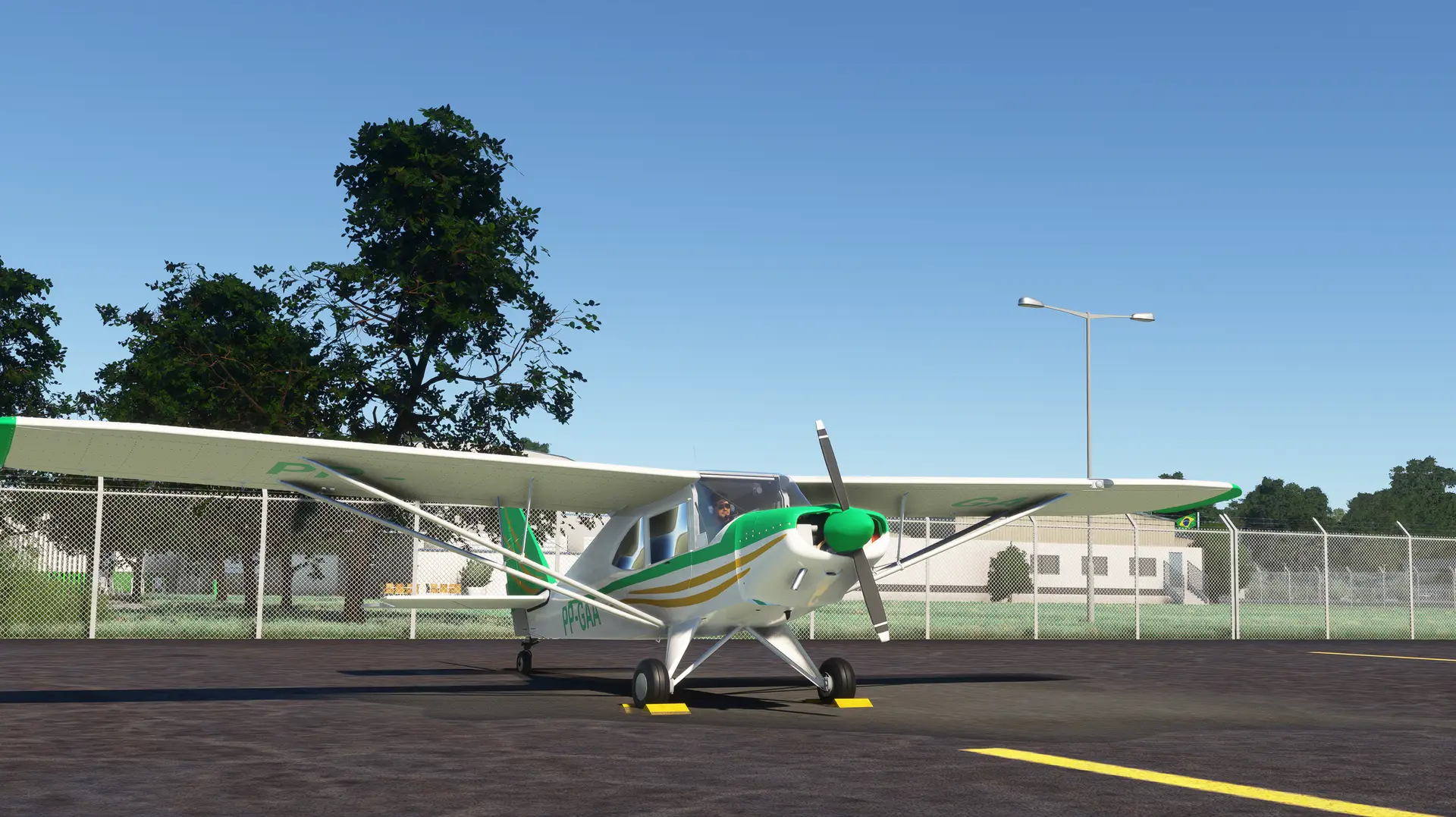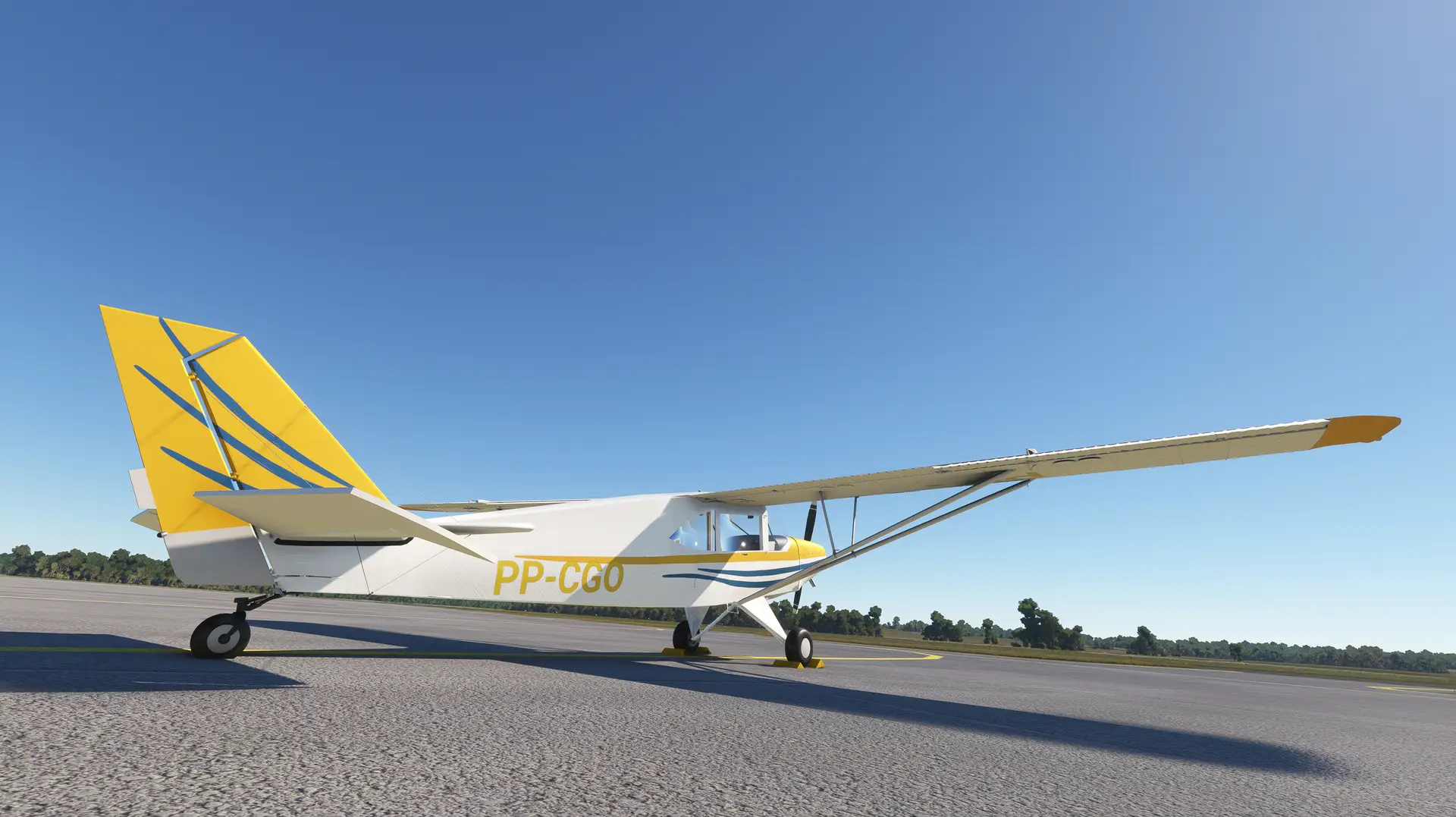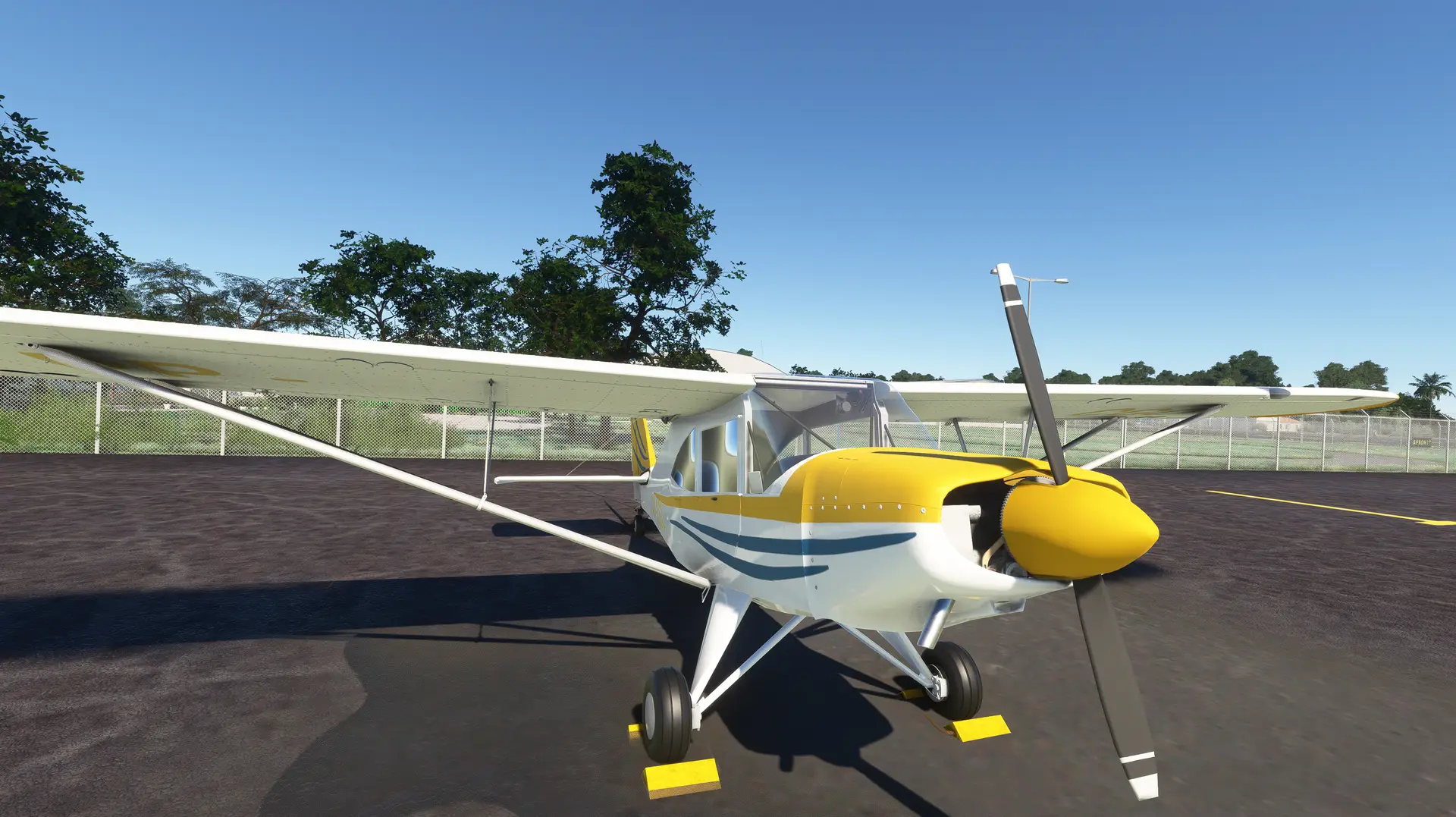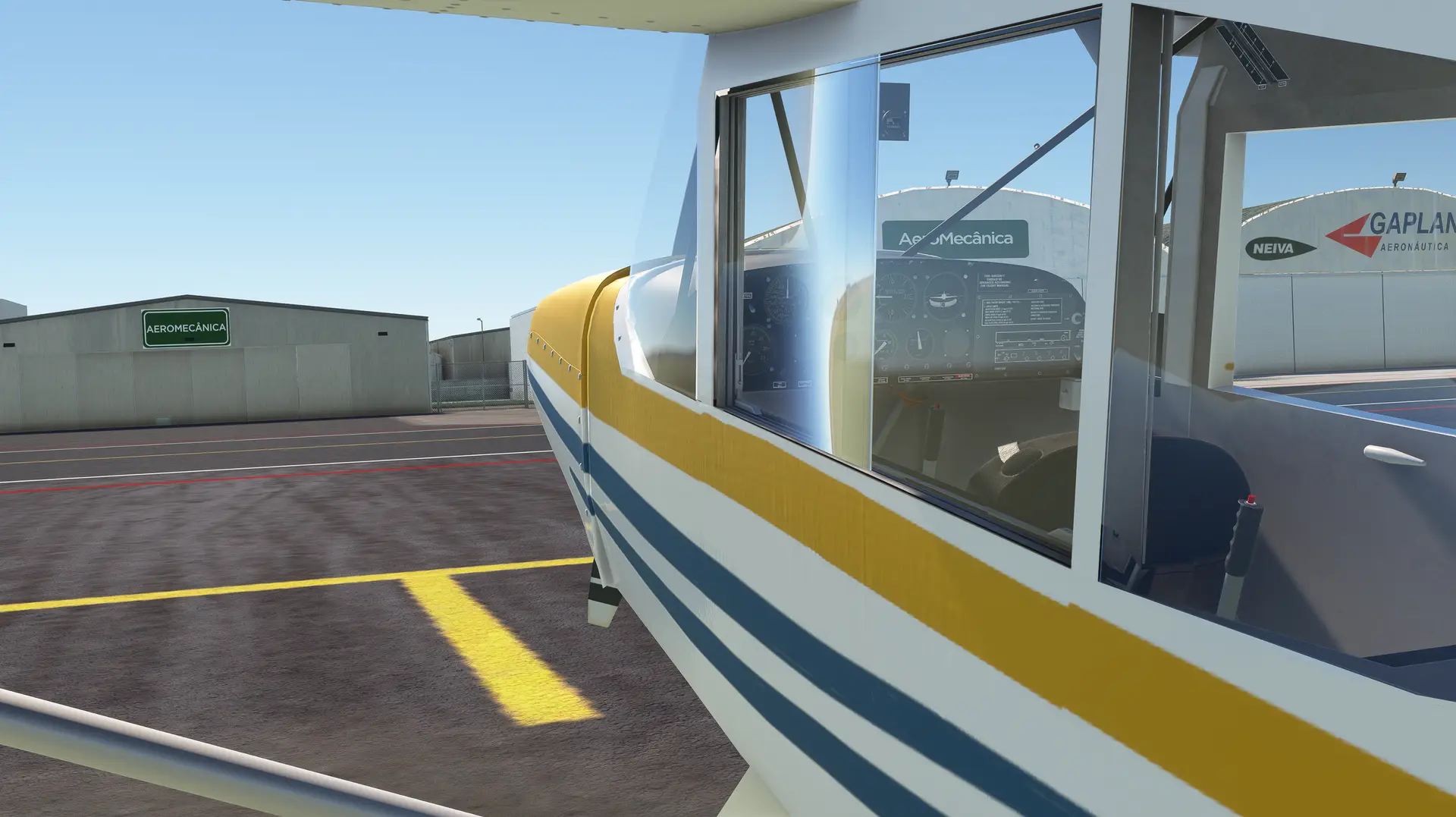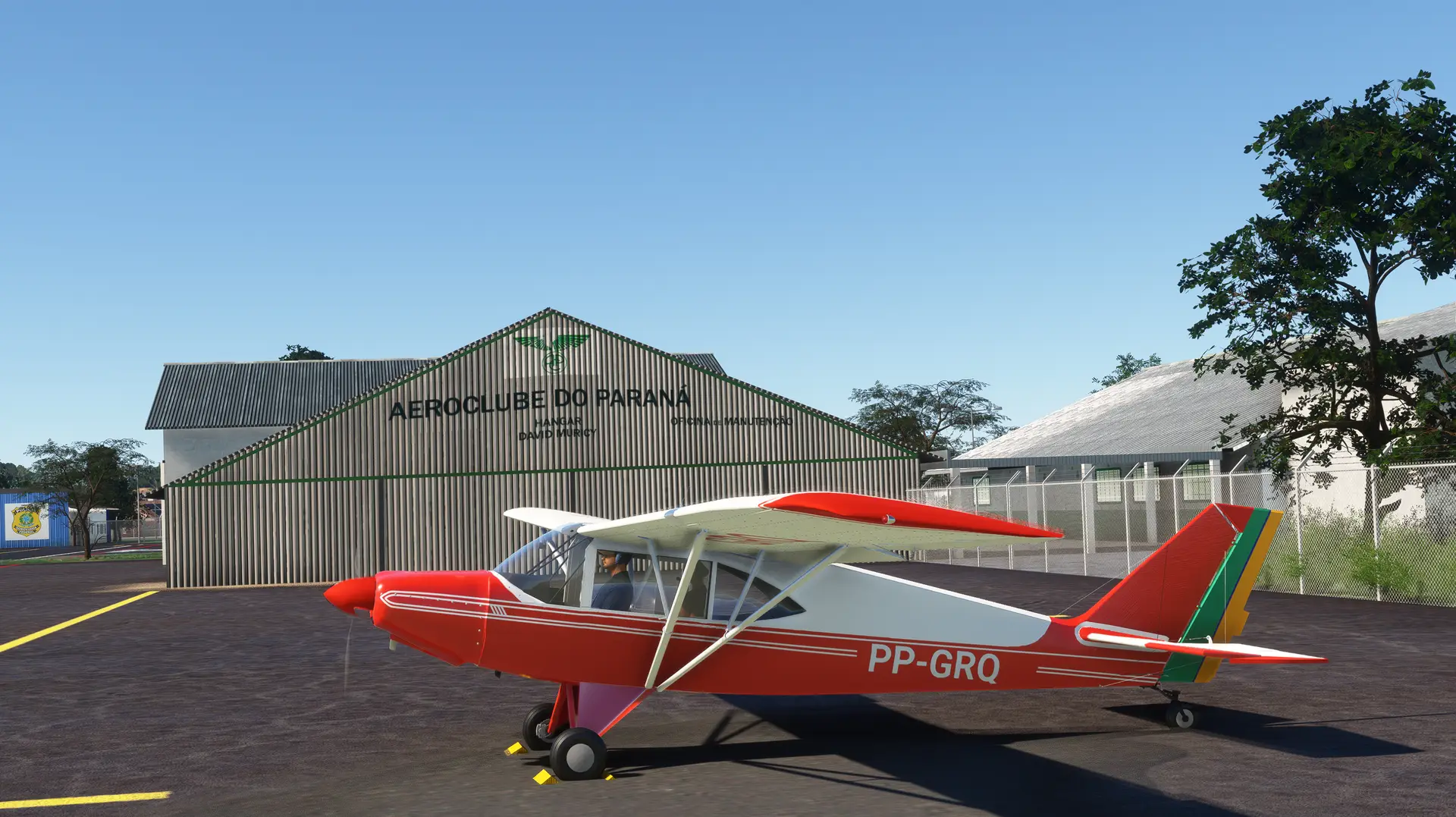- USD 8.49
- -23%
- USD 8.49
- USD 6.49
- Sale Ends: January 7 2026 6:00 PM +00:00
- View more offers at FS Addon Compare
- Added: November 18, 2024
- Updated: February 20, 2025
The Aero Boero AB-115 is a single-engine, high-wing, light utility monoplane developed and manufactured by Argentine aircraft producer Aero Boero.
The tandem two-seat AB-115 took its maiden flight in March of 1969 and it was introduced in 1970.
The aircraft has been primarily used as a trainer and for aviation club flying, especially in Brazil, up to the present day.
About it´s features:
High detailed custom model made with 4K PBR textures
4 Liveries available
Tablet available with Aircraft Options and Checklist
GPS Option Available.
DISCLAIMER:
- Set the Flight Model to MODERN, in General Options Configuration Menu / Flight Model, to make all the systems works correctly.

